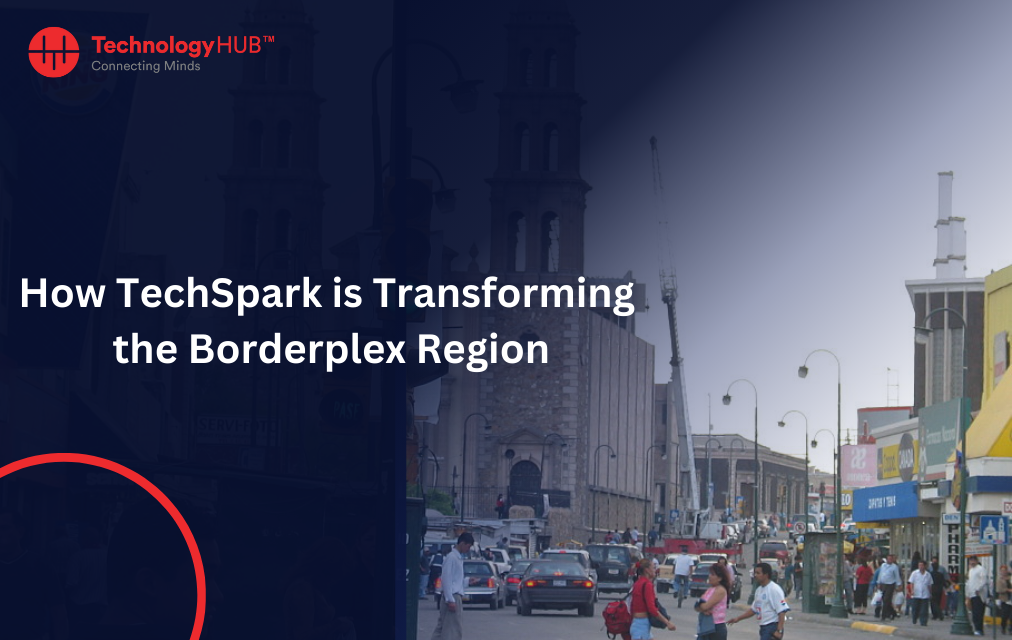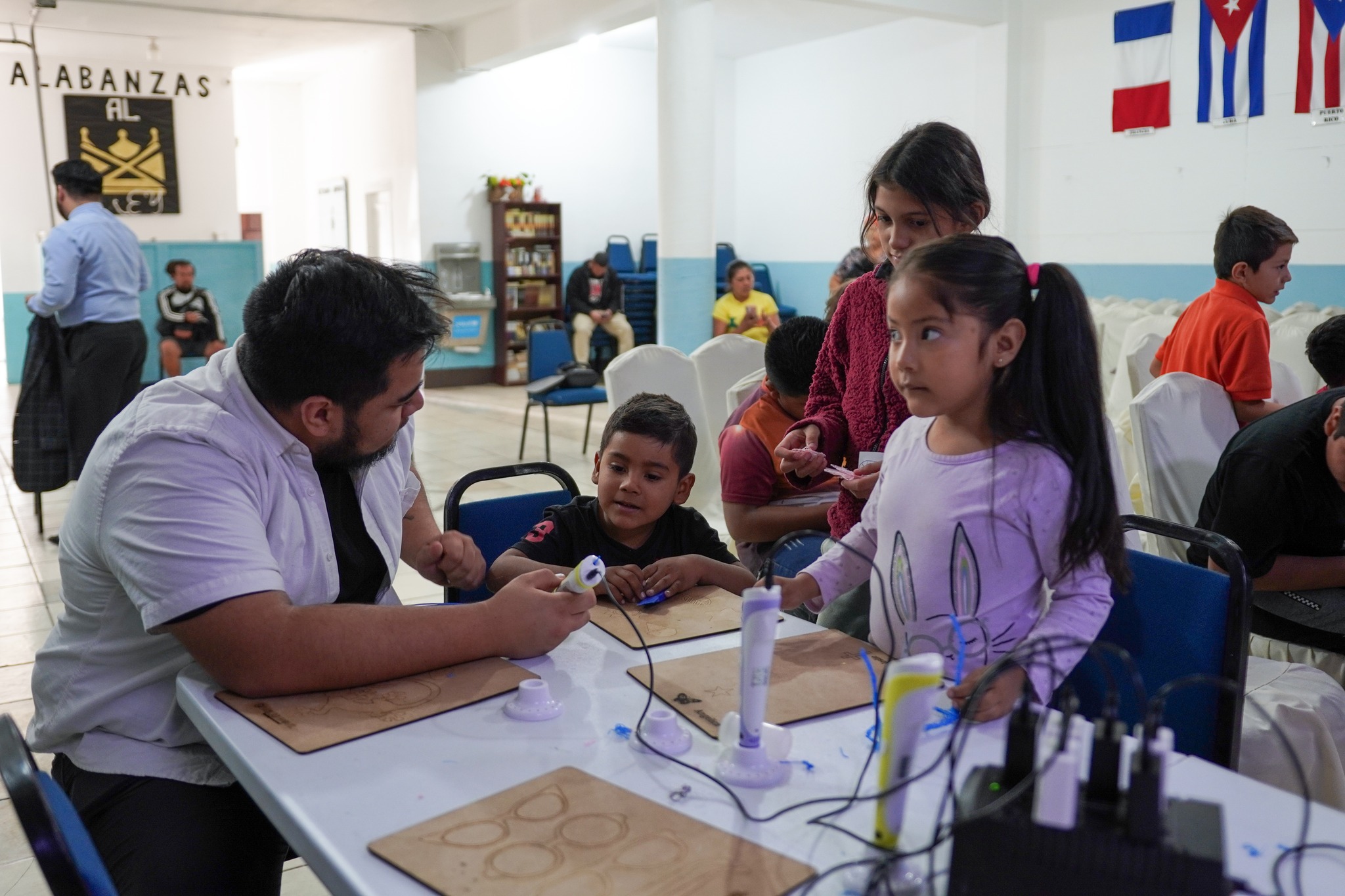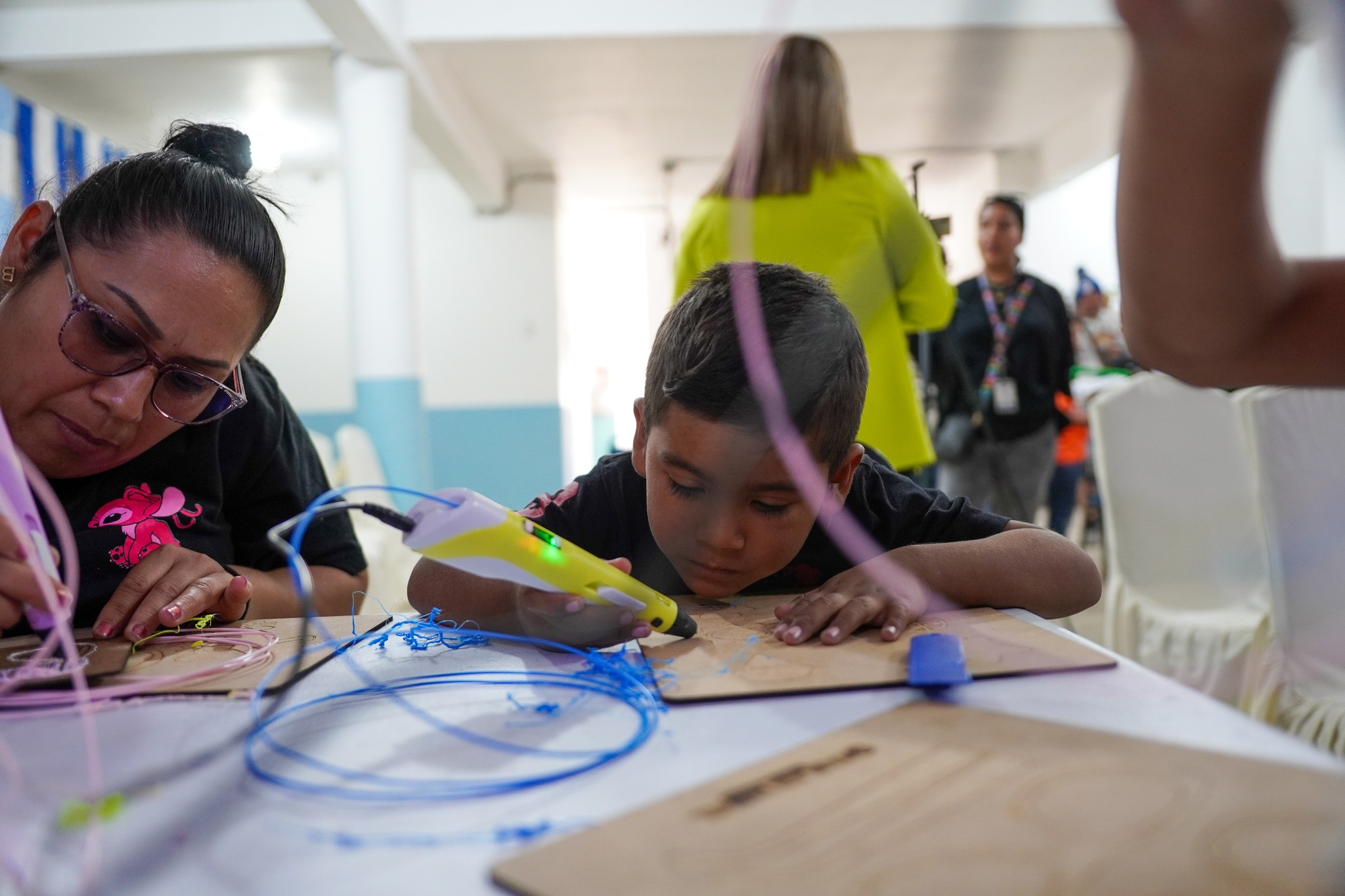
TechSpark has become a catalyst for change in the Borderplex Region by developing an innovation ecosystem. This civic initiative created through the partnership between Microsoft, Technology HUB and the Bridge Accelerator goes beyond technological advancements; there has been a demonstrable social benefit to the region and for the youth participants that have accessed its programs.
In this blog, we will speak to the impact of Microsoft TechSpark in Ciudad Juárez, and the U.S.-Mexico border region, and how it provides a compelling use case for establishing similar tech and innovation hubs in many more U.S. cities.
Why Programs Like TechSpark Matter in Communities like Ciudad Juárez
Communities like Ciudad Juárez often face unique challenges that can hinder economic growth. The Borderplex Region, which encompasses Ciudad Juárez, Mexico, Las Cruces, NM, and El Paso, TX, the Borderplex is ground zero for US-Mexico trade and immigration. Ciudad Juárez is known as the birthplace of maquiladoras and the 3rd largest manufacturing center in North America. Together, Ciudad Juárez and El Paso, make up the largest bi-national metropolitan region in the world, bringing in over $54 billion per year to the interlinked economies.
Microsoft’s TechSpark aims to bring the innovations of Silicon Valley to communities by investing in STEAM education in high schools, offering digital skills training, high-speed broadband, and enhanced technologies for nonprofits.
In Ciudad Juárez, TechSpark addresses the key challenges of the area head-on by serving as a catalyst for economic development and job creation. In a region where access to technology and educational resources might be limited, TechSpark plays a pivotal role in democratizing opportunities.

How TechSpark and Technology HUB are Transforming Ciudad Juárez
TechSpark's 2017 expansion into Ciudad Juárez, with a $1.5 million USD investment in the binational Bridge Accelerator has been nothing short of transformative. By working in collaboration with local stakeholders, including Technology HUB, the initiative has become an integral part of Ciudad Juárez's economic and social landscape.
Through partnerships with educational institutions and local businesses, TechSpark has created a thriving innovation ecosystem, nurturing talent and providing a platform for the development of cutting-edge solutions. One such program is the Fab Lab Juarez, a maker space workshop providing people with free access to skills-focused learning, collaborative coding, robotics training, and prototype development and manufacturing.
Take the example of Wendy Sandoval, who like most people in the region has spent time in both El Paso and Ciudad Juárez, and was inspired by the incredible culture of innovation that had been made available through Fab Lab. At age 18, Wendy joined the FabLab El Paso workshop where she learned skills that helped her take her inventions to the next level. There, Wendy was able to design and build a prosthetic arm for her best friend Shelly, using the Fab Lab’s 3-D printer. Wendy acknowledges that because of where she lives, she likely would not have otherwise had the opportunity to make her ideas into a reality.
Why Tech and Innovation Hubs are Critical for US Cities
The success of Microsoft TechSpark in Ciudad Juárez provides a compelling case for the establishment of tech and innovation hubs in more U.S. cities. As technology continues to reshape industries and job markets, these hubs can spur economic development, attract investment, and position cities as leaders in the global innovation landscape.
A 2023 study by the National Skills Coalition (NSC) found that 92% of jobs now require digital skills. Currently, the U.S. ranks just 29th out of 100 countries for digital skills.
Where the demand for digital skills and technology-driven solutions is ever-growing, tech and innovation hubs, like those that have succeeded in the Borderplex, can act as catalysts for job creation and talent development. These hubs not only attract tech giants but also foster a culture of entrepreneurship, propelling local businesses into the forefront of technological advancements.

How to Start an Innovation Ecosystem
Starting an innovation hub requires a strategic approach that aligns with the unique needs and strengths of the local community. The success of TechSpark's partnership with Technology HUB and the Bridge Accelerator in Ciudad Juárez and El Paso, TX provides valuable insights into the key steps for initiating a similar endeavor.
- Community Engagement: Collaborate with local community leaders, businesses, and educational institutions to understand the specific needs and aspirations of the community.
- Strategic Partnerships: Forge partnerships with key players in the tech industry, academia, and government. These collaborations can provide access to resources, expertise, and funding.
- Digital Skills Training: Prioritize digital literacy programs to empower individuals with the skills needed for the digital economy. This can include coding workshops, technology certifications, and other skill-building initiatives.
- Incubation Spaces: Establish physical spaces that serve as incubators for startups and innovative projects. These spaces should encourage collaboration, creativity, and the exchange of ideas.
- Entrepreneurial Support: Provide support mechanisms for entrepreneurs, including mentorship programs, access to funding, and guidance on navigating the business landscape.
- Inclusivity and Diversity: Ensure that any innovation hub is inclusive and promotes diversity. Creating a welcoming environment for individuals from all backgrounds fosters a richer and more vibrant ecosystem.
Technology HUB is hopeful that this great example can be replicated in cities around the U.S. and Mexico, and maybe even one day globally. If you’re interested in learning more about Technology HUB, the Bridge Accelerator program, or the great work we have done with Microsoft through TechSpark, contact us today.
